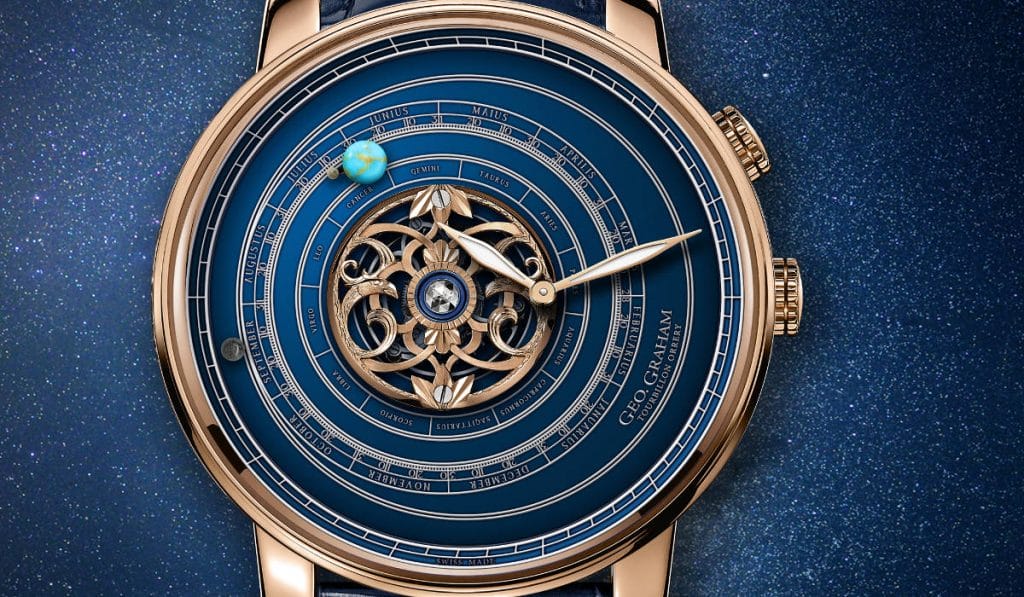Since time immemorial, men have sought to understand the mysteries of time and space. The same can be said for revered English clockmaker, George Graham. Regarded by many in the industry as the father of modern watchmaking, Graham’s finest accomplishments include inventing the start and stop device of the chronograph as well as the dead-beat and cylinder escapements. It was in 1995 when Eric Loth banded a group of likeminded investors together to revive the watchmaker’s name by launching Graham SA, a watch manufacture based in the Swiss village of La Chauxde- Fonds, which has served as the world capital of the watchmaking industry for over a century.

Lauded for its atypical timekeeping creations, including the aviation-inspired Chronofighter and the sporty Silverstone, serious timepiece enthusiasts with a fondness for stargazing might also want to set their sights on the manufacture’s most complicated timepiece to date: the Geo- Graham Orrery Tourbillon, which draws its genesis from an actual planetarium created by George Graham for the fourth Earl of Orrery, Charles Boyle. Housed in a hefty 48mm case in sumptuous 18K rose gold, a closer look at the centre of this tribute timepiece will reveal a concealed tourbillon, topped with a cabochon diamond that represents the sun and further enhanced by motifs displayed in the original planetarium created by Graham.
This tribute timepiece comes with a loupe to allow users to fully appreciate the minute details on the dial, which include a Gregorian calendar and horoscope. This detailed dial also serves as a stage on which the planets Earth and Mars perform a cosmic dance around the sun. According to Patric Zingg, Managing Director of Graham, these miniature planets were created using meteorite fragments while the movement itself was specially developed for Graham by renowned independent watchmaker, Christophe Claret. The timepiece offers over 1,000 years of precision, provided that the user resets the planetary positions every seven years for the moon and 25 years for Mars. According to Zingg, this can only be done manually by trained master watchmakers using a special system that involves observing the 100-year scale located on the caseback and concealed pushers on both sides of the case.


